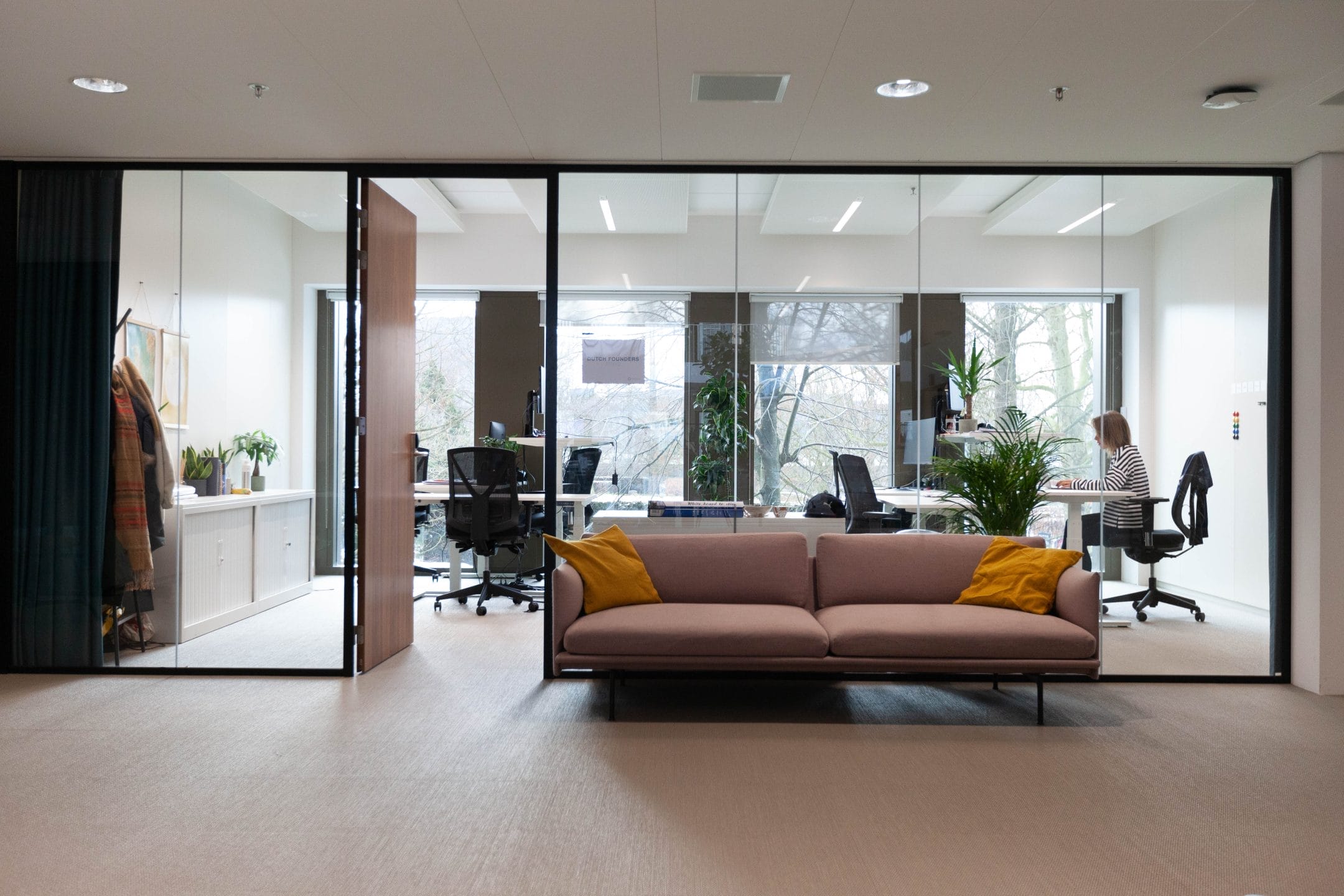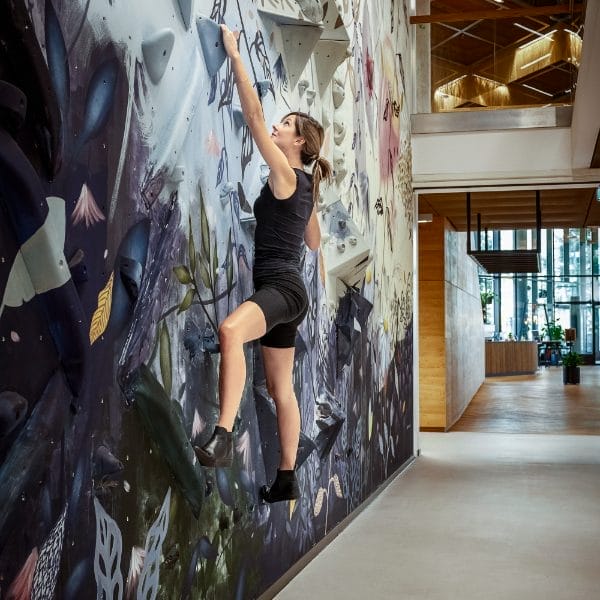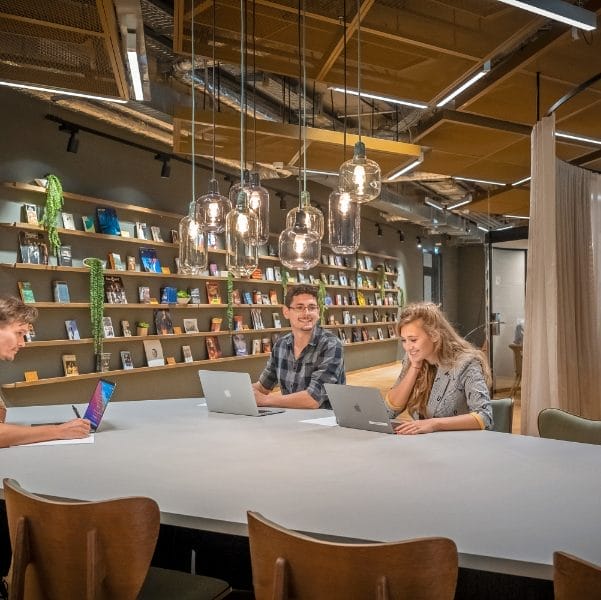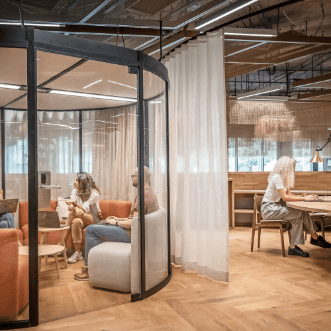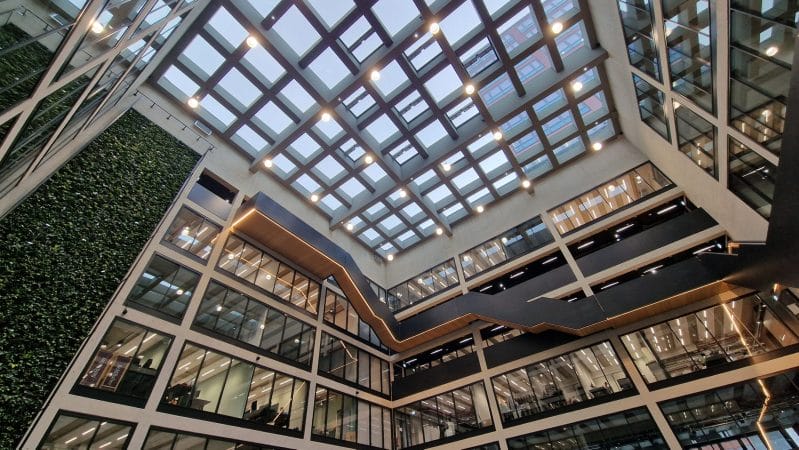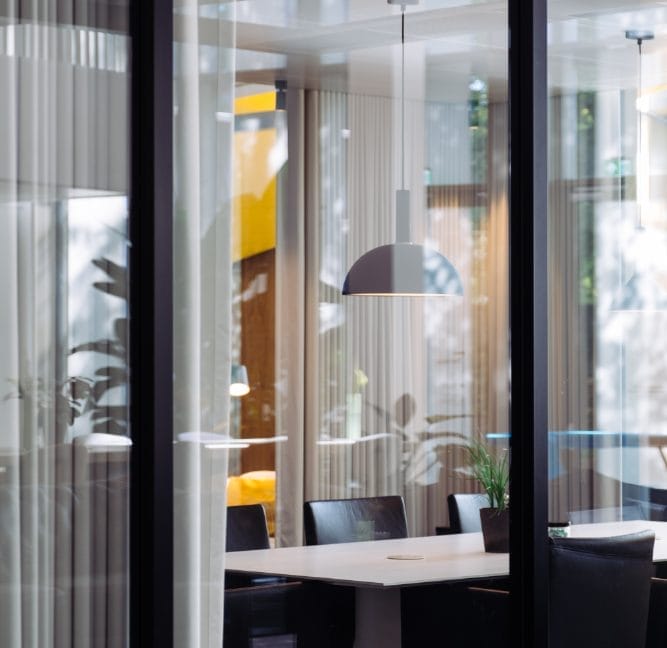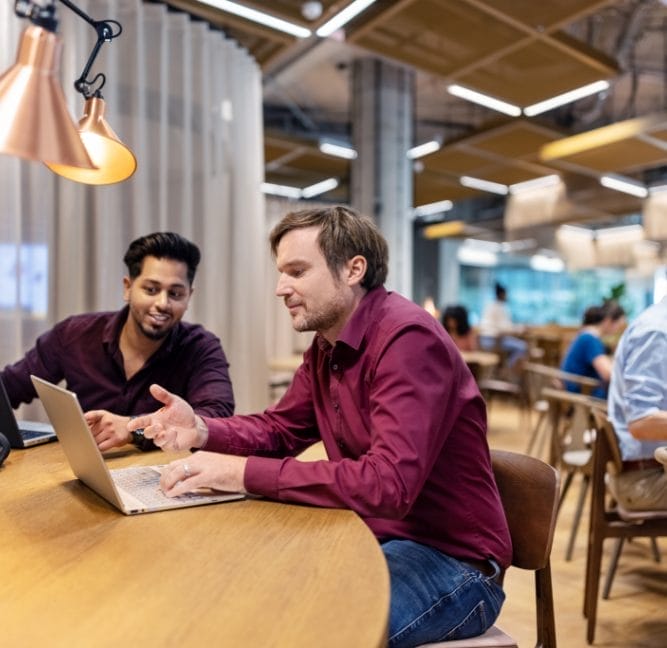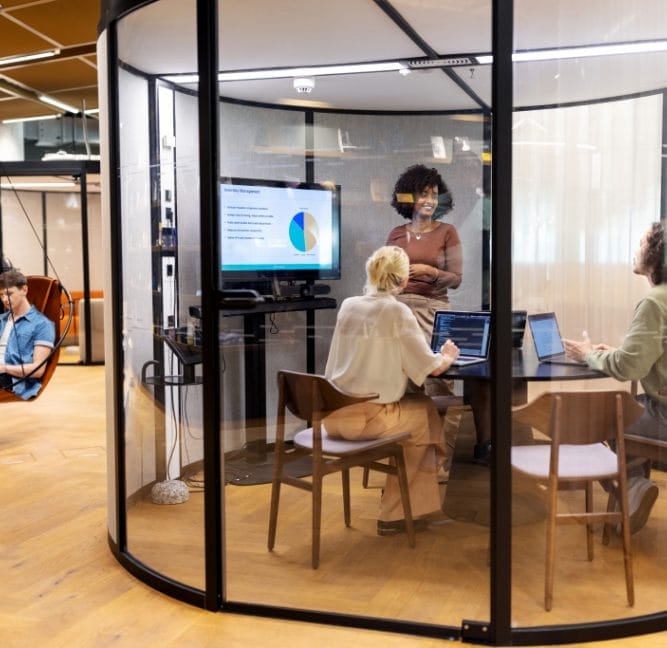We can’t stop talking about the importance of sustainability for the wellbeing of our members and for the environment’s sake. But this time we are not doing it alone.
We had the chance to discuss the topic with an expert of the combination between sustainability and constructions. Hoang Anh Nguyen has years of experience in innovation, sustainability, start-ups, real estate… and it all came together in his most recent project with Edge.
Innovation with AI
Hoang is the Head of Communications & Sustainable Construction at alcemy:
Sign up for our newsletter
Want to read more about our
stories on flexible work?
Want to read more about our stories on flexible work?
“We are an AI startup in the field of sustainable concrete. We developed a software program, which enables cement and concrete manufacturers to produce more cost-efficiently and monitored CO2-reduced and sustainable cements and concrete, as it is one of the most important materials of the world. The EDGE East Side and the EDGE Friedrichspark, which is currently under construction, are great examples of this.
Concrete is the foundation of our civilization and will continue to be the building material of the future for decades and centuries to come. Concrete is the most CO2-efficient building material – the only problem is that really huge quantities are used worldwide, which means that 5-7% of global CO2 emissions can be attributed to it.
Everyone is feeling the pressure to decarbonize. The European cement industry in particular has already embarked on this journey because the EU’s Emissions Trading System has set a price (currently around 70 euros) per tonne of CO2.”

Hoang’s role in the company is fundamental to counteract this challenge and spread the message:
“I’m mostly responsible for partnerships with real estate companies. Even though our clients are usually cement concrete developers, there is also the need to engage the final deployers of this product, i.e. the real estate and construction world.They are hugely important for decarbonization, because without demand, the market situation will not change. Consequently, producers keep producing the same way, because of the almost non-existing demand for sustainable concrete. Developers and construction companies are the ones who have to seek the change, and I facilitate this process. We want to create the demand for the new, sustainable concrete – we want to make people interested in it.”
Technology is the biggest ally for innovation – but it doesn’t work by itself:
“In EDGE Grand Central for example you have all kinds of sensors to reduce consumption etc. There was more focus on the technological part of the structure than on the construction itself, but now there’s one more step that can be taken to improve the results even more, by taking action directly during the construction phase and regarding embodied carbon. And that’s also where alcemy jumps in: Our AI-supported software helps cement and concrete manufacturers to successfully produce and deliver particularly low-clinker and therefore CO2-reduced cements and concretes. With my work, I then create partnerships with construction companies and project developers so that this sustainable concrete, which is digitally controlled with alcemy, is also in demand.”

Edge X alcemy
It was with this plan in mind, that Hoang and alcemy got in touch with Edge and presented this unique partnership:
“We wanted to involve big companies in our project and thanks to some contacts by our founder Leo we managed to have a talk with Edge’s CEO, who was interested in starting a trial. We then developed with our customer Spenner Herkules from Berlin a sustainable concrete recipe to reduce emissions by 50-60% and used it for the new EDGE East Side building. We identified two floors and used over 500 cubic meters of concrete to build them. Edge has the same pioneer spirit, trying to foster and accelerate innovation, so everyone in the company wanted to try this out.”
Unlike technology, sensors and devices, this facet of sustainability is not visible to the eye. EDGE East Side’s innovation is purely chemical:
“The real challenge is in the way the concrete is produced. The producers are the ones doing the work – our software provides very important insights in cement and concrete quality but in the end our customers have to sucessfully produce and deliever this concrete – and with that tasks we at alcemy want to support them with our products.
The concrete used for the EDGE East Side was extremely challenging and required precisely this digital quality monitoring. The concrete recipe alone was unique, with just 28% cement clinker, which is mainly responsible for the CO2. In order to still achieve the strength, our customer had to reduce the water content, which in turn made it more challenging. Apart from the concrete recipe, however, there were also challenges regarding the building height of 130m, the pumping distance of the concrete over 250m and the summer temperatures of over 30%. In the end, everything worked out and we were super proud that this ultimate litmus test was a very important blueprint for us, our client, Edge and Züblin.”

Action From Within
It is high time action was taken. The world does need better buildings and there’s a main reason for this:
“Climate crisis! Concrete has a crucial role in changing the industry. This is a topic that should interest everyone, as everyone is affected by it. It’s not just the people inside of the buildings that are helped by the use of sustainable materials – it’s the whole world itself. Sustainable concrete is already available today, the challenges are there but it’s not impossible and the deployment makes a huge difference for the ecosystem. Moreover, the companies renting spaces in a sustainable building can benefit from better air quality and their employees can enjoy the idea of doing something good for the environment, just by being there.
Other big companies like Amazon, Zalando and DHL are focusing more on corporate sustainability with specific goals, just like small start ups do, and renting spaces from Edge and EDGE Workspaces makes you contribute to making the world a better place. ESG reporting becomes easier too. Sustainability is not always something that you can see – it can also just be the principle behind it. It isn’t just materials, but also social matters. The target of your offices, for example, is people interested in all aspects of sustainability, to which you already provide a lot, and adding the materials to that, is just more plus points.”

Material & Social Resilience
The concept of sustainability kept on changing through the years – but recently, more than ever:
“In the last decade its meaning changed a lot. It’s a topic that has always been discussed since decades ago, but it was kind of a niche topic. Now it comes to the everyday life of a person – the person is the center of the focus. You can go to a supermarket and buy only meatless products; you can go to a café and find fair trade coffee; people are much more aware of it all now. This is happening for many reasons, among which the Fridays for Future movements and the use of the internet.
People are now asking about sustainability. Even when they come to us to look for a job, they’re not only there for the job itself: they want to know about our contribution to the environment and that’s why they choose us. They don’t want to achieve it only in their personal life, but also on a bigger scale. That’s the mindset they have and the mindset they want in the company they work for.”
And the buildings in which these businesses operate are the first step and the frame of this commitment:
“Buildings need to foster the creativity. I saw buildings that don’t have enough height in the ceiling, which doesn’t give space to feel good. Lately people were put in the focus, like it happens at Edge. They posed the questions: what is fostering communication, creativity, engagement? In a building with wooden doors and a lot of walls you can’t achieve that. You can now have spaces where you can alternate deep focus and collaboration, just like here at EDGE Workspaces Grand Central. This is a relatively new concept. Before they used to open cafeterias for people to meet at work, but it’s not the same. Now the workspace itself is the social environment.
After the covid pandemic we saw this need of socialization being even more rooted. Many prefer the practice of home office and remote working, and offices need to catch up with this, and create more reasons for employees to join their colleagues in offline interactions in their offices. Community activities, networking events, everything you do at EDGE Workspaces should make people more interested in coming over to their office. And this is crucial for wellbeing. People need to express emotions, have external inputs, but also rest, enjoy silence, relaxation, etc. This is what you offer at Edge.”

The Change is Now
And once again, this is where the words “hope” and “future” meet:
“The vision in the end is that every smart building is using more and more the best materials available, and you can see it in these sustainable locations. Buildings that are good are also climate resilient, with lots of green, like in EDGE Grand Central and HafenCity. Cities are heating up more and more, but you can still enjoy great air quality and the right temperatures in this kind of buildings.
We spend a lot of time in our workspaces – 8 to 10h per day; we may even spend more time at work than at home, so we must make it feel comfortable for everyone. Hopefully it will be like this everywhere. We all want to create our own work environment, and that’s special for me.”
Find out more about EDGE Workspaces and our locations on our website, or take a free tour.



